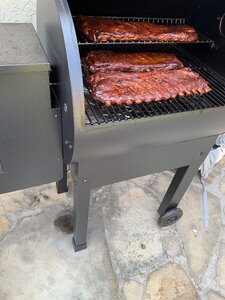How many people use water pan with their tareger? would you put pan right under the grill rack or on the rack to the side?
how many people line the heat shield with foil for easy clean up? Wonder if it would be a fire hazard If caught on fire due to grease.
Also when i center my ribs in the middle for some reason i see oil/juice dripping on the left side of my smoker. If the liquid rolls to the right and the meat is not near the left side, how does liquid manage to drip down the seam on left side of smoker? I’m Stumped !
how many people line the heat shield with foil for easy clean up? Wonder if it would be a fire hazard If caught on fire due to grease.
Also when i center my ribs in the middle for some reason i see oil/juice dripping on the left side of my smoker. If the liquid rolls to the right and the meat is not near the left side, how does liquid manage to drip down the seam on left side of smoker? I’m Stumped !
Last edited:






